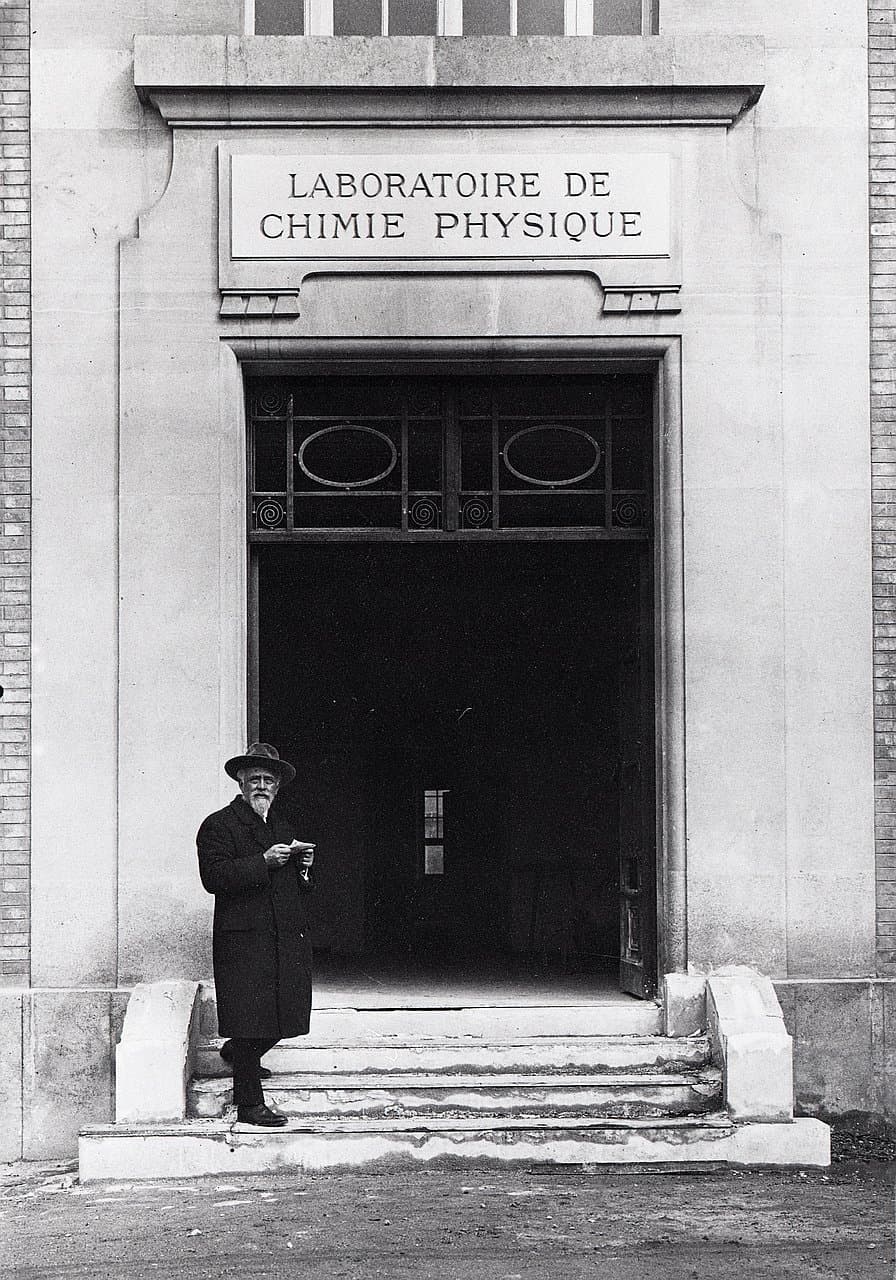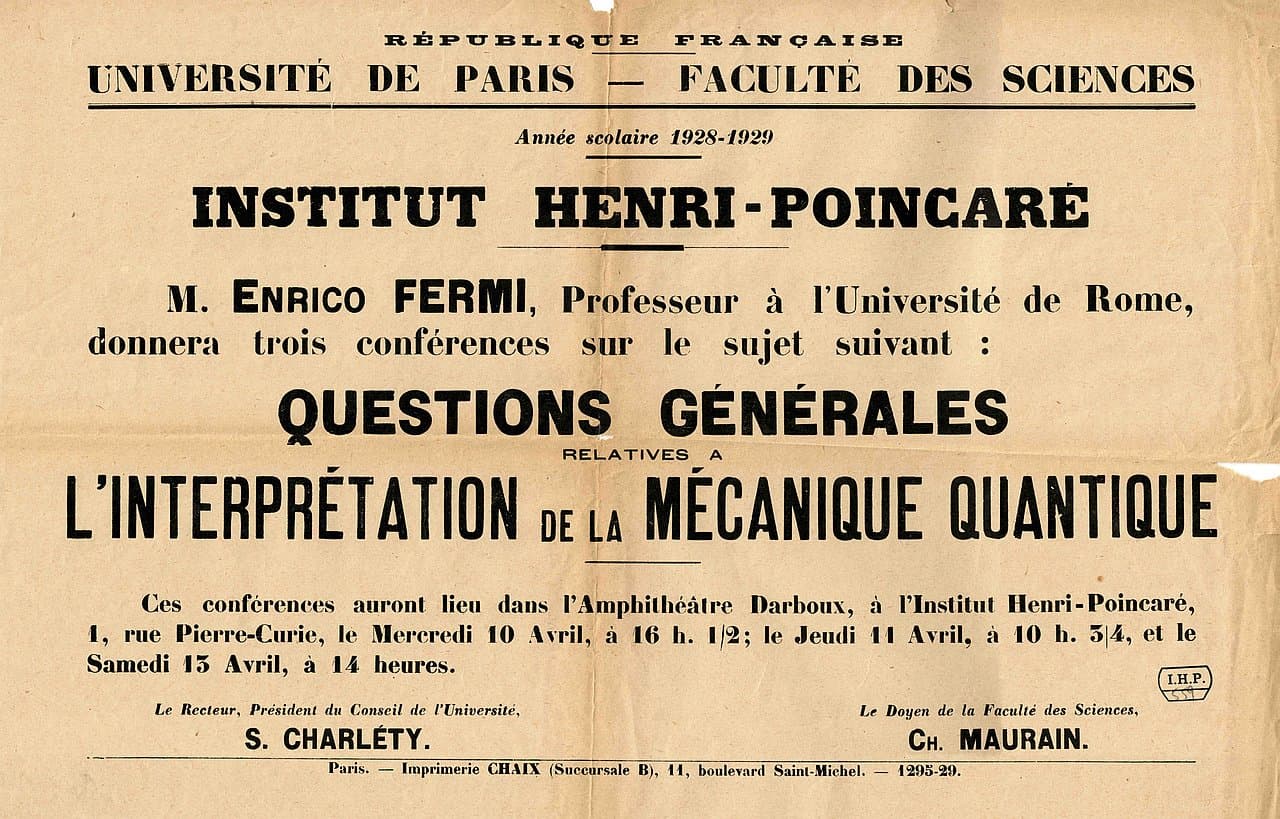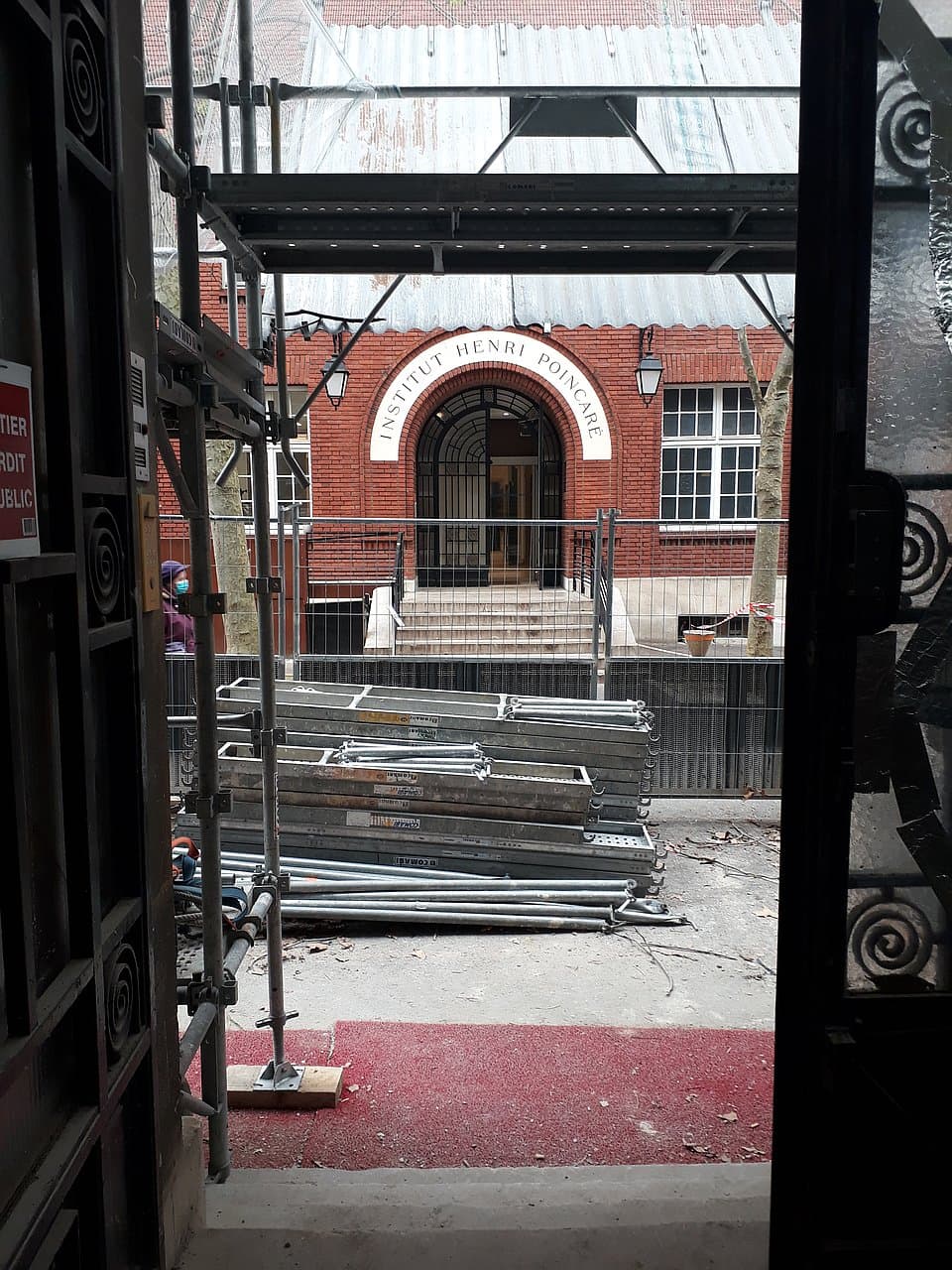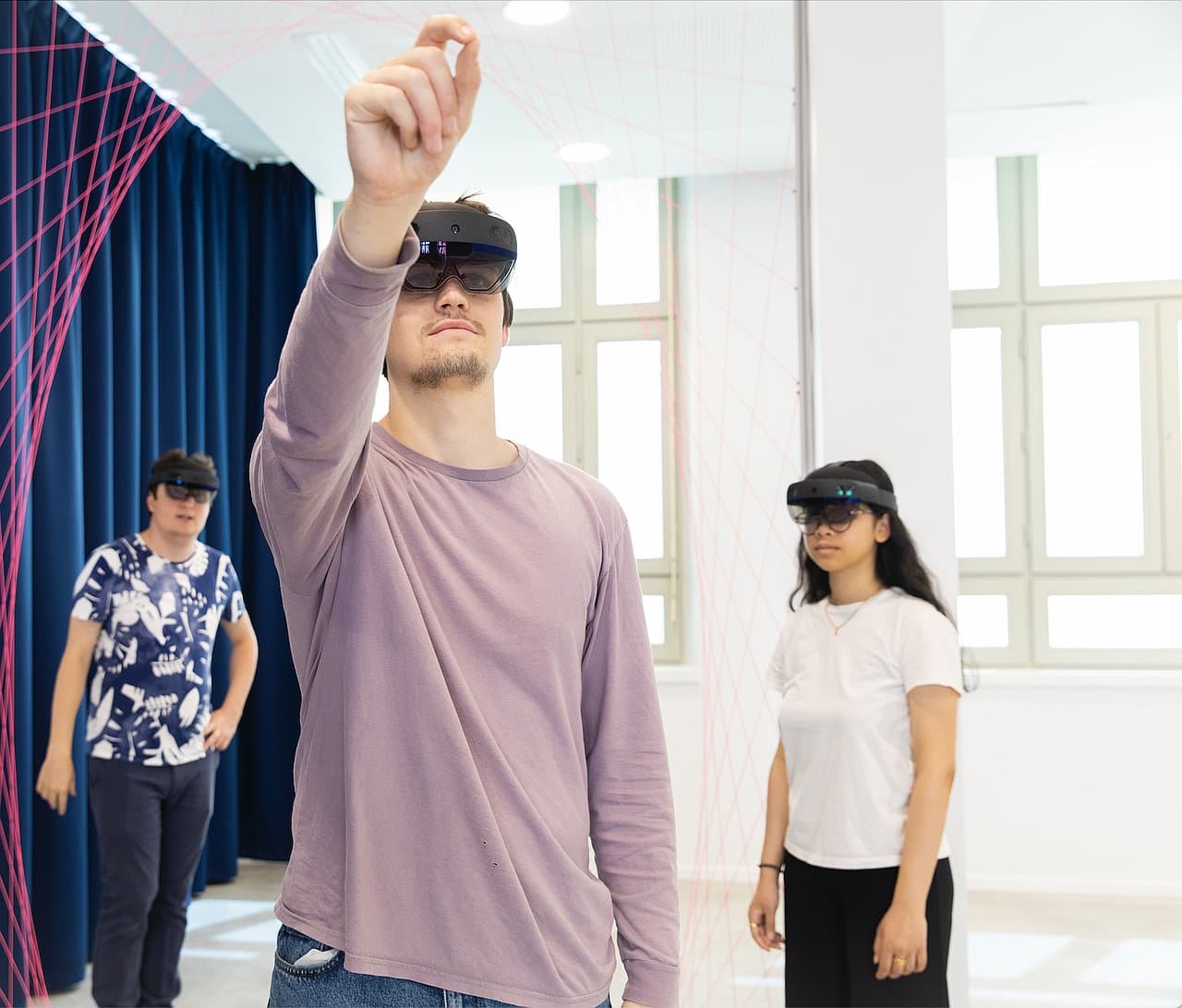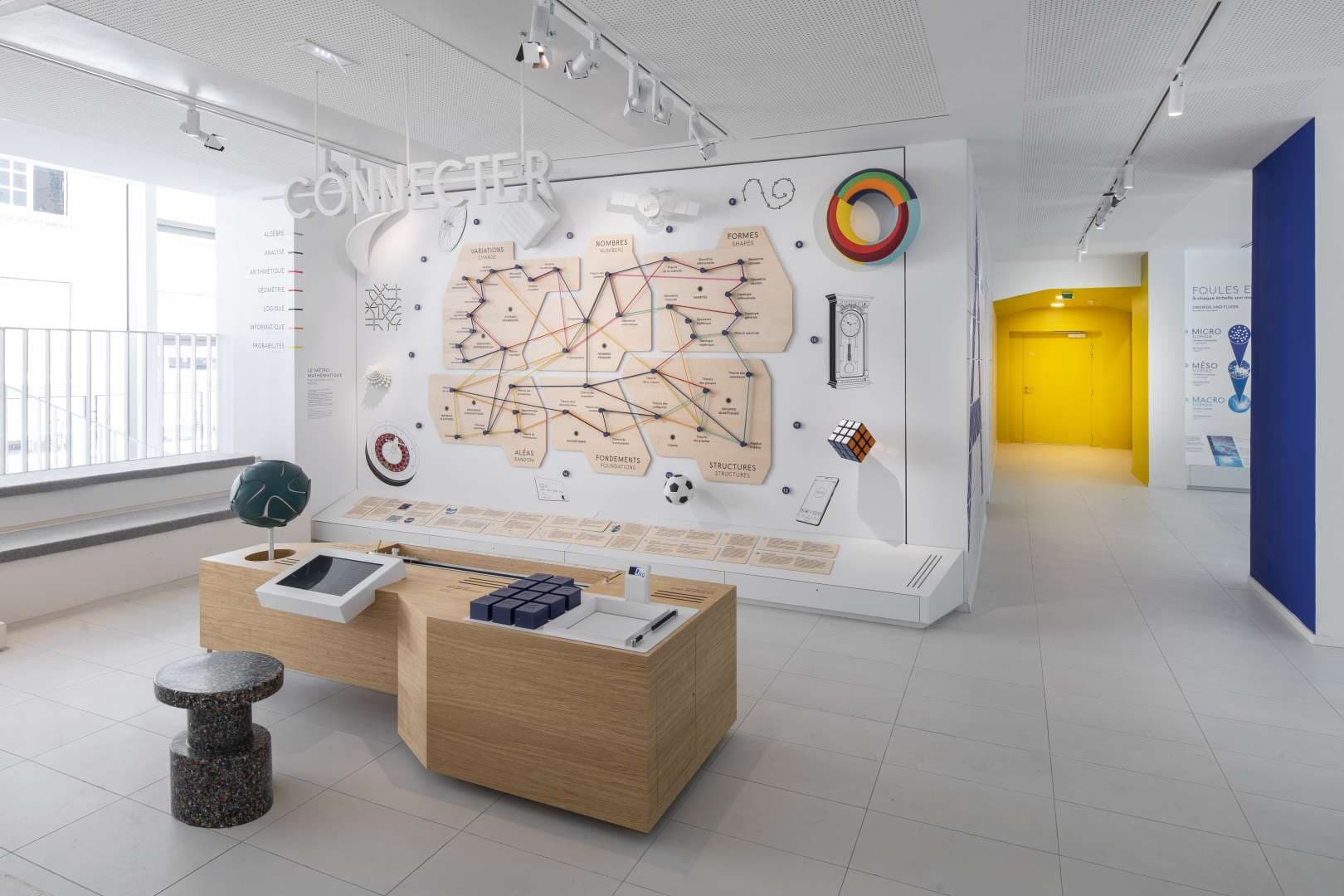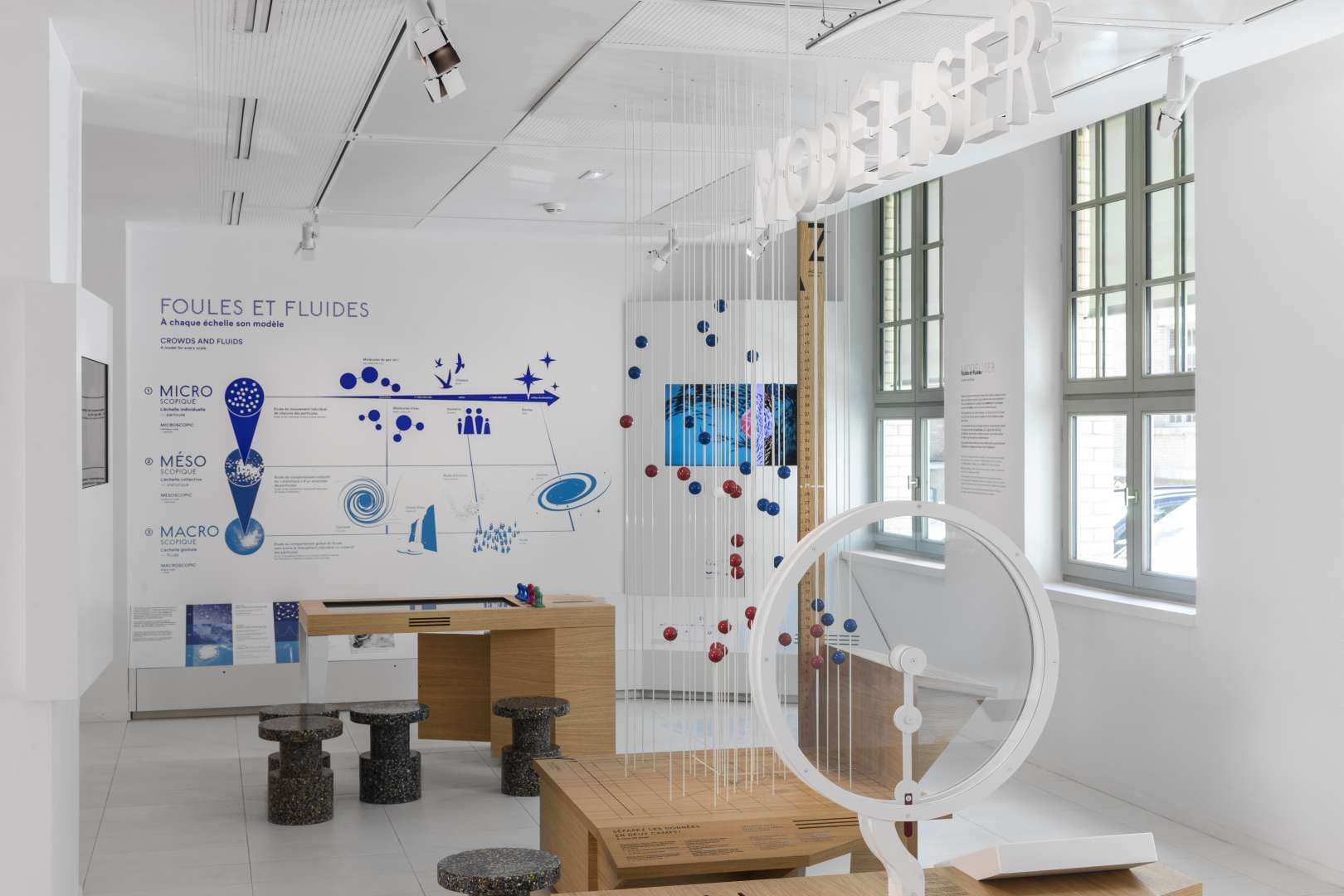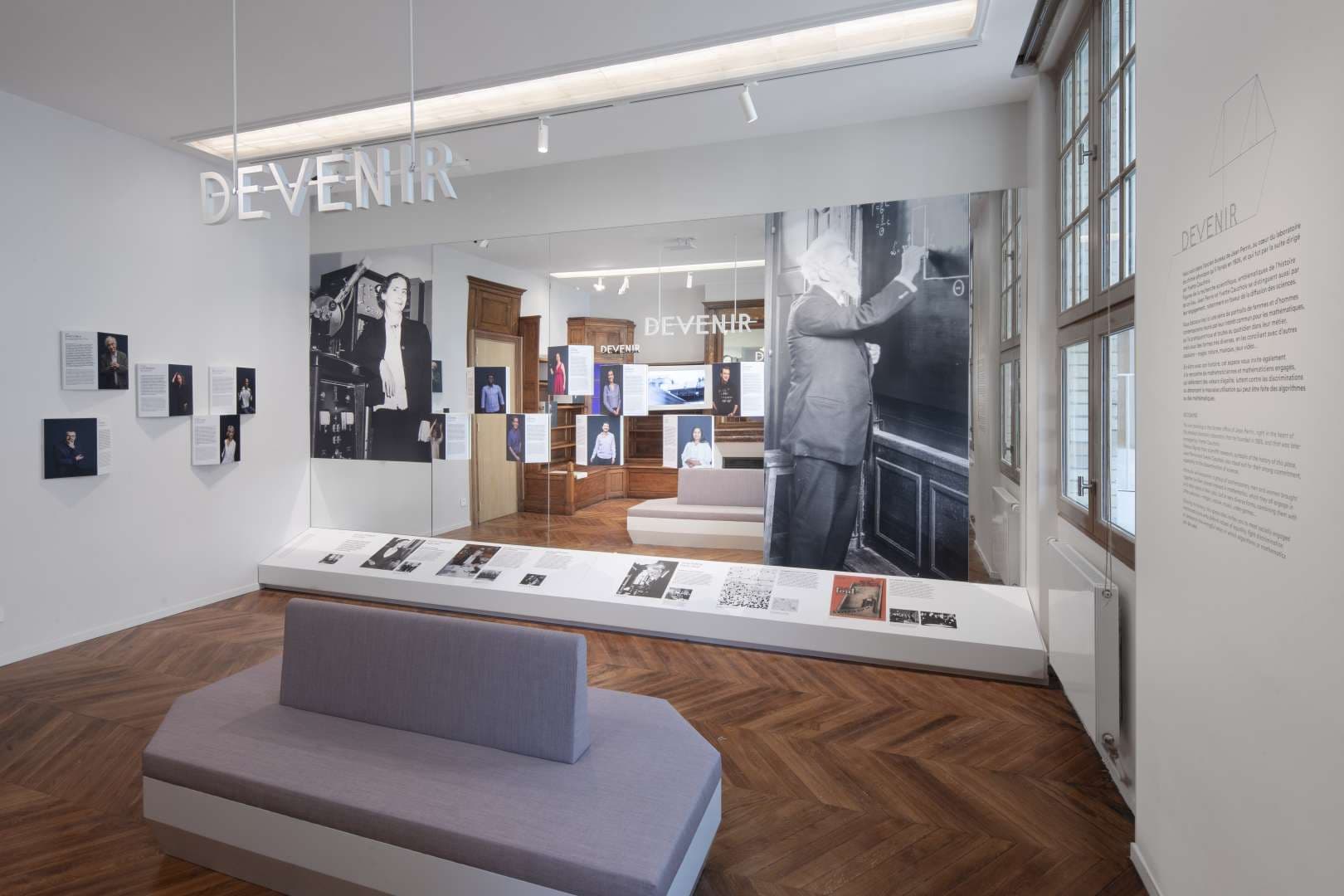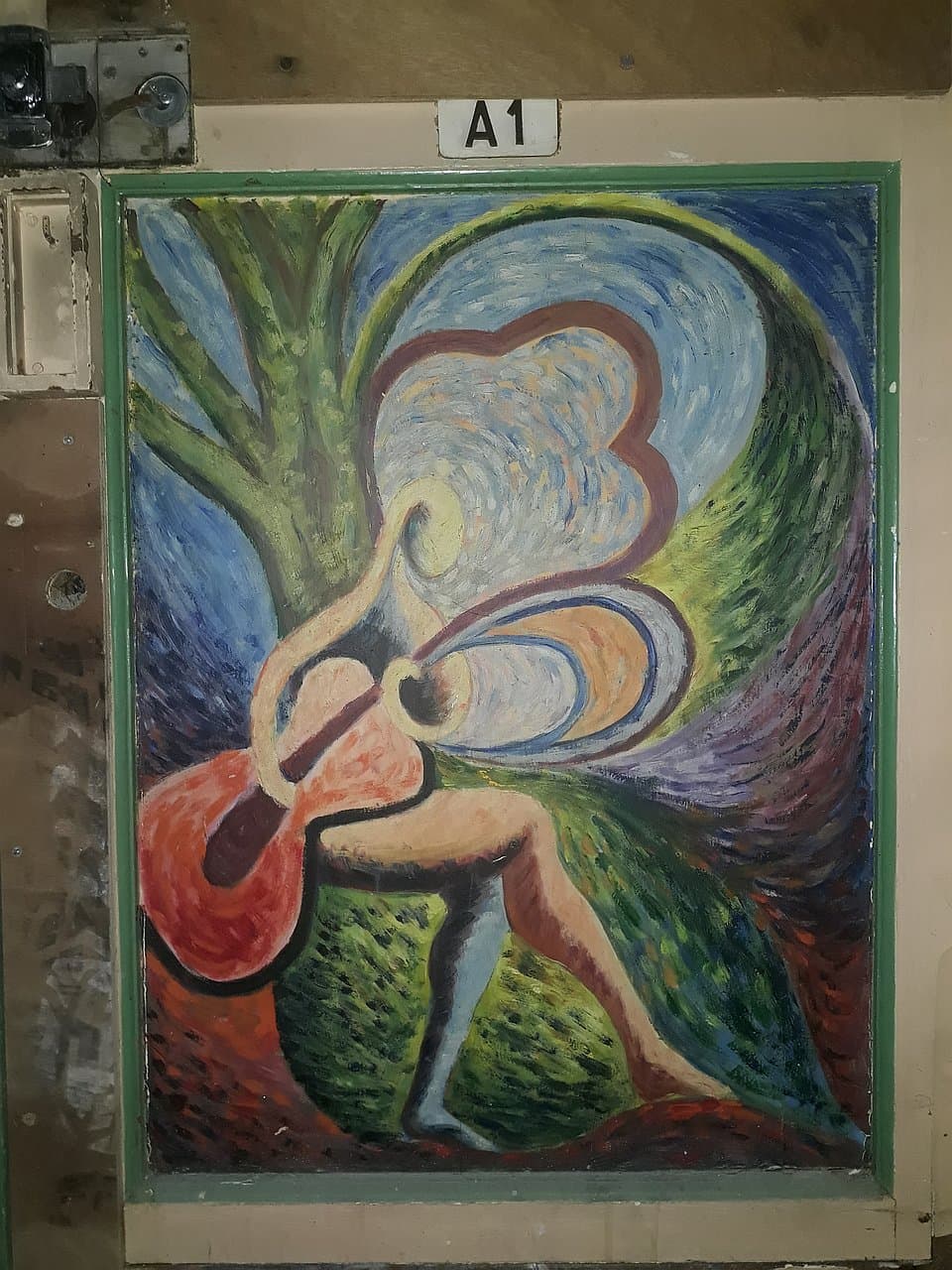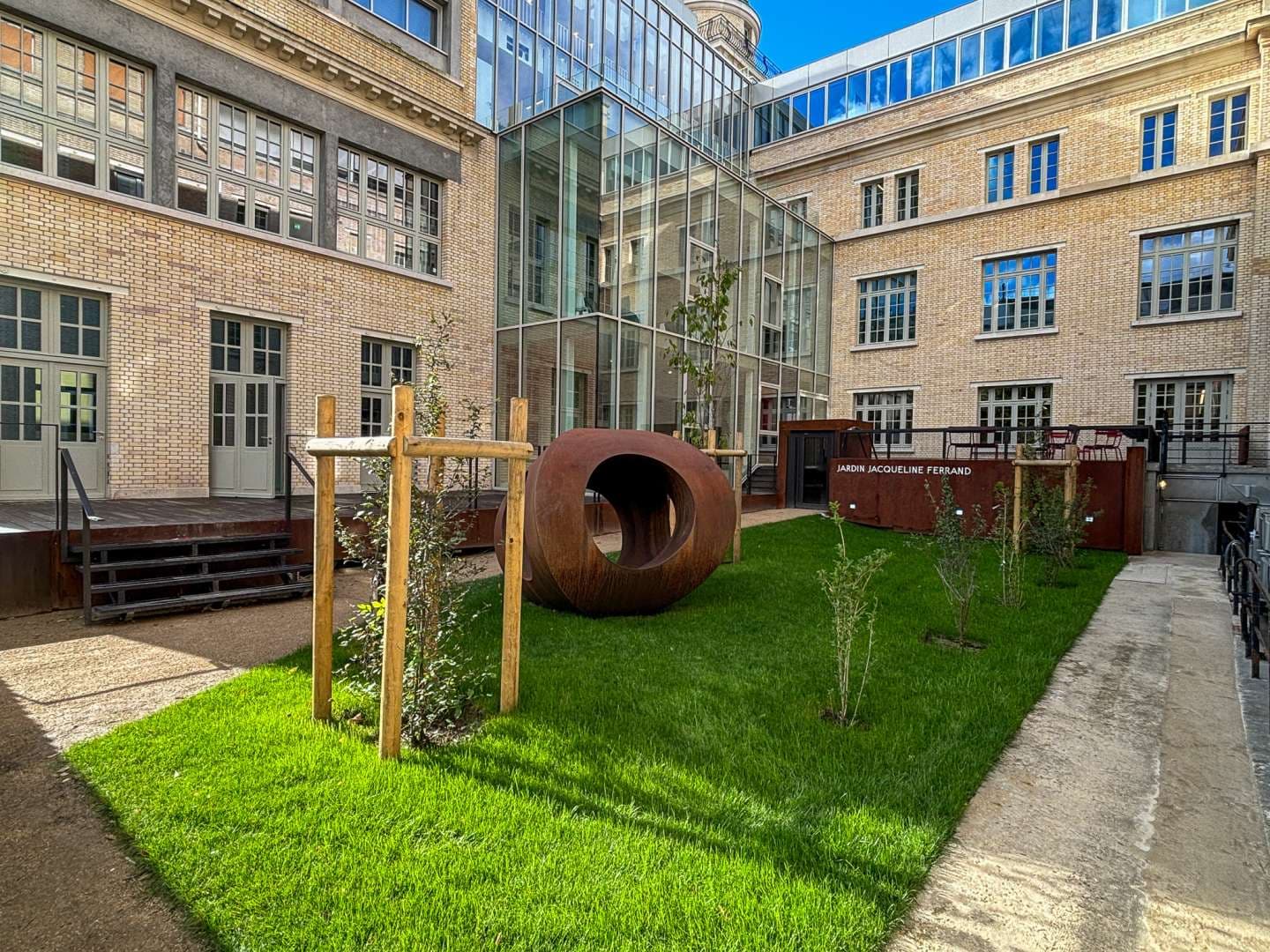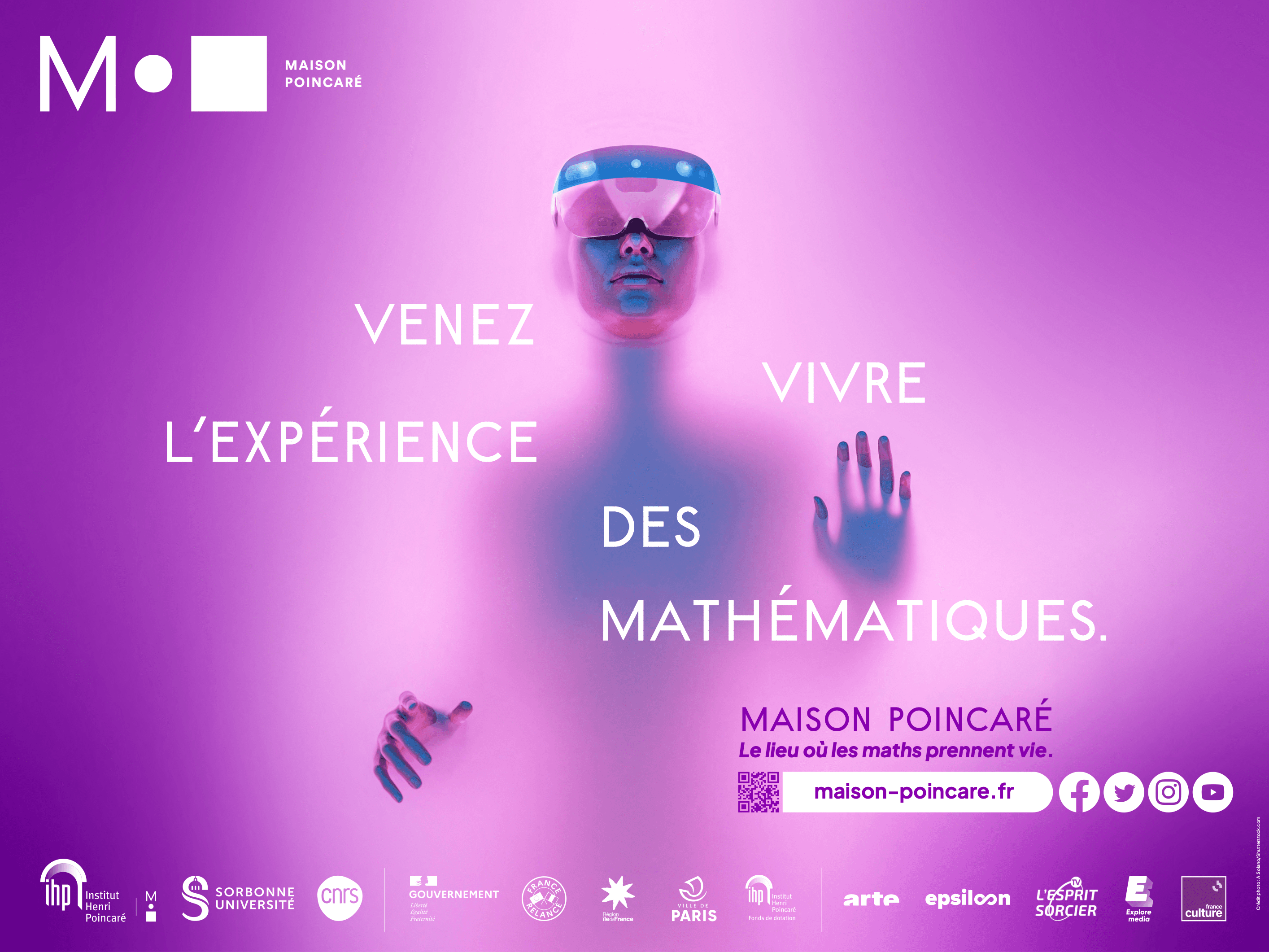Beginning of the story
Universcience – Palais de la découverte
The Institut Henri Poincaré (IHP) has a long history1https://www.ihp.fr/en/history dating back to its inauguration in 1928 by the then President of the Council, Raymond Poincaré, a cousin of Henri Poincaré (1854–1912). Founded by the mathematician Émile Borel (1871–1956), the institute was built thanks to private funds from the International Education Board of the Rockefeller Foundation and the French patron Edmond de Rothschild. It sits opposite the physical chemistry laboratory built by the physicist Jean Perrin (1870–1942) just two years earlier. Perrin’s building itself (Figure 1) is adjoining the Institut du Radium, Marie Curie’s laboratory, which was completed on the eve of WWI. All of these brick buildings are located at the heart of Paris on the fields of a former convent – later converted to a reformatory run by nuns – acquired by the University of Paris at the beginning of the 20 century.
Institut Henri Poincaré, Paris
In the interwar period, Borel and his assistant Jeanne Fournier, born Ferrier – who held a Ph.D. in mathematics and was appointed as assistant in calculus of probability but actually worked as a secretary – invited to IHP the greatest specialists of the time in analysis, probability, and mathematical physics: Léon Bloch, George Birkhoff, Max Born, Marcel Brillouin, Francesco P. Cantelli, Torsten Carleman, Charles G. Darwin, Paul Dirac, Théophile de Donder, Albert Einstein, Enrico Fermi (Figure 2), Vladimir A. Kostitzine, Paul Lévy, George Pólya, Erwin Schrödinger, Vito Volterra, etc., from whom we can read lectures in the Annales de l’Institut Henri Poincaré.2https://www.ihp.fr/en/library/annals
Over the years, IHP developed as a renowned international research centre for mathematics and theoretical physics. Even though Borel’s building was raised by two additional floors in the 1950s, the institute’s activities became somehow cramped at the turn of the 21st century. All the more so that it hosted several learned societies (SMF, SMAI, SFdS, SFP),3Société Mathématique de France, Société de Mathématiques Appliquées et Industrielles, Société Française de Statistique, Société Française de Physique. non-profit associations (Animath, Femmes & mathématiques, MATh.en.JEANS) and the Fondation Sciences Mathématiques de Paris. It had become difficult to accommodate all the people in the offices, along with regular seminars, national or international meetings beside the IHP scientific programmes coordinated by the Centre Émile Borel – a dedicated department created in 1994 when the institute was reborn after a post May 1968 period of uncertainty.
Inception of the expansion
Cédric Villani became director of IHP in 2009. He had great plans for it and looked for possibilities to expand the premises from the start. Perrin’s building, which was still hosting the physical chemistry laboratory, renamed Laboratoire de chimie physique – matière et rayonnement (LCPMR), was not up to modern standards. The Université Pierre et Marie Curie (UPMC), who owned the building, was planning to move LCPMR to more suitable premises at “Jussieu” (Figure 3), its main campus.
Villani managed to convince UPMC to reallocate Perrin’s building to IHP as part of a major centre for mathematics which would be open to the public. This plan was reminiscent of Michel Demazure’s ideas, who had defended IHP’s future when meeting with Lionel Jospin, the Minister of Education, in the late 1980s. Villani laid the groundwork for his plans with first initiatives such as exhibitions, a film club, public lectures, documentaries, aimed at the general public, school children, companies and society in general.
Together with his deputy director Jean-Philippe Uzan and with the help of many others supporting these ideas, Villani secured an impressive 14-million-euro public funding for the refurbishment of Perrin’s building (Figure 4). This included 8 million from the city of Paris, 3 million from the Île-de-France region, 2 million from the French Government, and 1 million from the CNRS, not to mention the estimated 9 million value of the building per se. As of its completion in 2023, the whole budget eventually approached 17 million, including an additional contribution from the French Government as part of the recovery plan following the Covid-19 crisis. During the construction, a small part of the budget was dedicated to renovate Borel’s original building.
The project of an expanded mathematical centre, known internally as IHP+, has also been supported by the IHP Endowment Fund, created in 2016 by Villani on that purpose with the CNRS, UPMC, learned societies and a Circle of Partner Companies as founding members. Outside the mathematical community, it was promoted under the name of “Maison des mathématiques” project,4https://www.youtube.com/watch?v=AFLhIUGdBLE, https://www.youtube.com/watch?v=79obSq24tyw with a mathematics museum as flagship, which would occupy the ground floor () and part of the basement () of Perrin’s building.
In 2017, Villani was elected Member of Parliament and resigned from his director position. Before his departure, the expansion project had been launched by UPMC as the project owner. An architect had been chosen, Atelier Novembre, along with a museum designer, du&ma. Their joint project had indeed convinced the jury of the architectural competition that it was the best at enhancing heritage features while complying with modern standards.
On 1 January 2018, UPMC (Paris 6) merged with Université Paris-Sorbonne, also known as Paris 4, to become Sorbonne Université, and I took over as director of IHP. For years, I worked hard with numerous people to make IHP+ a reality. For an extended period, I lived with visualisations of the IHP+ project provided by Atelier Novembre and du&ma, and I was lucky enough to see this dream decor come to life. I got much more involved in the museum project than I had anticipated. I loved this amazing experience, of which the following gives an overview.
CNRS Éditions
Museum project
At first, the museum concept relied on a few rough ideas launched by the former directors, Villani and Uzan. These ideas ranged from celebrating the founders (Borel, Perrin, Rockefeller, Rothschild) and telling the story of the building to showcasing a selection of mathematical objects from IHP’s collection of around 600 pieces (Figure 5) and developing a most innovative outreach experience in mixed reality, Holo-Math (Figure 6).5https://holo-math.org
Institut Henri Poincaré, Paris – Thibaut Voisin
We did implement the original ideas while modifying some as I shall explain later, and many, many more which we developed along the process. A huge amount of work was to be done to design the very first museum in France that would be fully dedicated to mathematics and its applications.
One of the features which made it unique among maths museums in the world is that it was to be installed within an international research centre. Our targeted audience was thought of as middle schoolers, high school students, college students, teachers, and of course the general public. A challenge and goal at the same time would be to foster interactions between the public and the researchers coming to work at IHP, either visiting or dropping by.
It soon became clear that we needed to find a good name. Indeed, “Maison des mathématiques” was not specific enough, as the whole institute had been known as the “House of mathematics and theoretical physics” for a long time. However, we liked the warm connotation of the word Maison. This is how we came up with the name “Maison Poincaré,” after a public poll. This name inspired the graphic designers working with du&ma, who proposed a logo (Figure 7) based on a pun in French that was already used by the Poincaré family themselves (“point” meaning dot and “carré” meaning square).
Institut Henri Poincaré, Paris – Pentagon
The name choice was settled early 2020. Marion Liewig, who had been appointed by the CNRS as project manager in 2016, became the very first head of the newly created department at IHP called Maison Poincaré, which led to a museum bearing the same name [3 S. Benzoni and M. Liewig, Bridging the gap between maths and society. In Handbook of Mathematical Science Communication, pp. 93–115, World Scientific (2022) ].
How it started
Back in 2018, we still had to imagine and work out the contents of the permanent exhibition, which we wanted to represent contemporary mathematics in all its immensity and vitality. We reached out to the IHP Outreach Advisory Board, chaired by Olivier Druet at the time, and also invited a number of specialists who we hoped to bring on board. After gathering everyone in a large lecture hall at Jussieu in May 2018, we involved researchers, teachers and science communicators in half a dozen working groups that were set up accordingly with the architectural spaces of the future museum. Marion, Olivier and I were very happy with the outcome and this nourished our energy to go on.
Institut Henri Poincaré, Paris – Atelier Novembre, du&ma, Thibaut Voisin
However, there was still a gap in the whole picture. We needed an expert who would be able to interact with these working groups and with the scenographer (the museum designer): a museographer.6A job explained in this video: https://www.youtube.com/watch?v=mfiL3v1hQjo. Only a few days after the meeting at Jussieu, I was contacted by one of them, Céline Nadal, who happened to be originally trained as a physicist and had heard of the project. The connection was facilitated by IHP’s deputy director at the time, Rémi Monasson, who had known her as a physicist. Luckily, we were allowed by Sorbonne Université to appoint Céline Nadal as our official museographer. This led to a most fruitful collaboration for the next five years.
By March 2019, Céline Nadal had come up with a detailed programme in which every museum space was described by a word intended to summarize its aim. Choosing topics and words had been a challenging task for every working group. The result was to be showcased by means of giant suspended letters designed by the scenographer: CONNECTER (connecting), MODÉLISER (modelling), VISUALISER (visualizing), DEVENIR (becoming), INVENTER (discovering), PARTAGER (sharing).
Figures 8–10 and 14 are actual pictures of the completed museum. It is amazing how they resemble the 3D simulations that were provided by the scenographer. We felt like we were entering our screen when we saw the real layout of the spaces.
Institut Henri Poincaré, Paris – Atelier Novembre, du&ma, Thibaut Voisin
Challenges and achievements
The issue of language came up early in the discussions with du&ma and their graphic designers. It was clear to us that we needed everything to be translated into English at least, so that our international researchers and tourists could enjoy the museum. This meant that we had to optimize the content so that both languages – French and English – would fit on panels, exhibits, hands-on, games, films, etc. The six giant words are among the very few words that are translated separately on panels or sheets.
It was also very important for us to ensure accessibility to people with disabilities. We were guided by a specialist to design adapted exhibits for visually impaired people. They include texts in Braille and figures in relief. It was a challenge for the scenographer to find room for this additional material. While it was a challenge to make everything fit, we are very happy with the outcome which also attracts the attention of people without any disabilities. For people that are deaf or hard of hearing, we included French sign language and subtitles in both French and English in all videos.
Institut Henri Poincaré, Paris – Atelier Novembre, du&ma, Thibaut Voisin
One of the most active mathematicians in the working groups, Clotilde Fermanian Kammerer, had been involved in the project since its inception, representing the CNRS National Institute for Mathematical Sciences and their Interactions as its deputy director for several years. In the autumn of 2019, she took over as chair of the IHP Outreach Advisory Board and played a crucial role in deciding the content of the Maison Poincaré [2 S. Benzoni-Gavage and C. Fermanian Kammerer, L’extension de l’IHP: un chantier au long cours. Gaz. Math. 177, 66–74 (2023) ]. At this point, I also thank Antoine Chambert-Loir who played a great role as a leader of a working group and who co-authored the mathematical Metro with me.
Quite notable, by 2019, the project management team had become 100% female with Marion, Céline, Clotilde and me. This certainly played a role in the decisions regarding the gender gap in mathematics that we took regarding the Maison Poincaré: First, we quickly abandoned the original idea of welcoming the visitors with portraits of the solely male founders and searched for alternatives. We came to the conclusion that our aim was to showcase an inclusive STEM world, as balanced as it should be. Therefore, we decided to present as many women as men [4 S. Benzoni-Gavage and C. Nadal, Concevoir un parcours permanent égalitaire. In Guide pour un musée féministe, pp. 104–109, Association musé·e·s, Rennes, France (2022) ], whether they are historical characters or contemporary personalities. This implied in particular to showcase the female physicist Yvette Cauchois (1908–1999), a successful and influential scientist who worked in this very office as director of the Laboratoire de chimie physique for 25 years.
A further big concern was the Holo-Math project, for which there was no pilot available when I took over as director of IHP. My first testing of the prototype was quite disappointing, and I was also put off by the tremendous cost of code development, not to mention the equipment. Nevertheless, we were convinced that this high-tech and innovative experience would be an asset to the museum. Fortunately, we managed to hire a science communicator, Adrien Rossille, early in 2019. He was fascinated by the concept and managed the Holo-Math project [5 A. Rossille, Holo-Math, visualiser les mathématiques autrement. Tangente Hors série 77 (Mathématiques et imagerie), 52–53 (2021) ]: With Adrien, we were able to find enough financial support to fully develop an experience around the Brownian motion, particularly thanks to the IHP endowment fund and the Fondation Sciences Mathématiques de Paris, and also to acquire a fleet of mixed reality headsets.
Serendipity and emotion
During the construction work I had the opportunity to see an ancient shaft (Figure 11) leading to 30-meter-deep experiment galleries which I would not have dared to explore even if I had been allowed to do so. We had very little information on these galleries, but I was originally told that they were used by Marie Curie (1867–1934) herself, which sounded quite exciting. An extensive search of the archives produced only two pictures and a sketch map. In particular, I found out that this shaft had been built to connect the building’s basement to underground old quarries… in 1935. Too late for Marie Curie! Despite my disappointment, I find it moving to have seen this shaft before it was sealed up by half a meter thick concrete disk for security reasons. Visitors of the museum can nevertheless see a glass disk indicating its location in the temporary exhibition space, together with a panel displaying the sketch map.
As an anecdote, another view that is lost forever is the painting (Figure 12) I discovered on a basement door in December 2019, after the building was cleaned from radioactivity, asbestos, lead, etc. Even though it was not a Monet, I liked this greeting left by former occupants even though we were not able to keep it. We were able to preserve another piece of art though: a painting of Émile René Ménard (1862–1930) dated from 1927. It spans over several meters on the rear wall of Perrin’s lecture hall, illustrating and surrounded by the first words of his bestseller book “Les atomes.”
Speaking of art and science, I have to mention the Rulpidon. This is the name given by the French artist Ulysse Lacoste to a series of metal art pieces. He had handed me a small, bronze version of it as a gift to IHP in 2019 – this is now displayed in an optical theatre in the entrance hall of the building. I was instantly fascinated by the Rulpidon, and in turn found several mathematical stories to tell about it [1 S. Benzoni-Gavage, Le Rulpidon sous toutes ses coutures. Dunod, Malakoff, France (2024) ]. We ended up choosing it as the symbol of the Maison Poincaré: In addition to the mathematical stories, the Rulpidon fits very well with the logo. A monumental, steel version of it (Figure 13) was later commissioned by the IHP Endowment fund and installed in the garden.
Institut Henri Poincaré, Paris
A last personal involvement I would like to talk about is the knots panel in the tearoom (PARTAGER) (Figure 14). Even though it is far from my field of research, knot theory is fascinating to me, as being rather recent – more recent anyway than most of the mathematics that people learn at school – and still an active theory opening to wider topics, while being rooted in ancestral knowledge of humanity. When discussing the best use of a large panel in the tearoom, the showcases of which were already planned to host mathematical objects in connection with art, Céline, Clotilde and I quickly agreed that knots were a golden subject. The scenographer supported our idea after we suggested that the knots should be made like bead necklaces to echo of the œuvre of French artist Jean-Michel Othoniel.
Institut Henri Poincaré, Paris – Atelier Novembre, du&ma, Thibaut Voisin
Opening and first feedback
After all these years of preparation, the Maison Poincaré eventually opened its doors to the public on 30 September 2023, three days after its official inauguration in the presence of Sylvie Retailleau, the Minister of Higher Education and Research.
This opening was a huge success, which we owe to the hard work of numerous people, starting from the IHP staff and in particular the Maison Poincaré team, managed since 1 January 2022 by Élodie Christophe Cheyrou. She secured additional funding and built a team composed of a cultural projects manager and three science communicators. Over a period of several months, they prepared the contents of guided tours to be offered to schools and to the general public, developing these in collaboration with teachers. Élodie also implemented a thorough communication plan with the CNRS and Sorbonne Université (Figure 15). This enabled us to have colossal media impact7https://www.ihp.fr/fr/espace-presse in newspapers, magazines, on the radio and TV.
Institut Henri Poincaré, Paris – A. Solano/Shutterstock.com
The museum’s capacity is limited to 200 visitors, for security reasons. This limit has been reached every Saturday and during all holidays since the opening. We also have a lot of visitors during school days. By the end of November 2023, all slots for school groups were booked for the whole school year. Depending on the success of the museum, we will be able to increase the staff number to offer more slots for groups.
Since the start in 2018 we have reached an impressive set of milestones, and achieved this amazing project in ways that could not have been foreseen when I jumped on board. As the next step, we now have to ensure sustainability of the Maison Poincaré, as part of an expanded Institut Henri Poincaré in a magnificent building. More challenges to come!
- 1
- 2
- 3
Société Mathématique de France, Société de Mathématiques Appliquées et Industrielles, Société Française de Statistique, Société Française de Physique.
- 4
https://www.youtube.com/watch?v=AFLhIUGdBLE, https://www.youtube.com/watch?v=79obSq24tyw
- 5
- 6
A job explained in this video: https://www.youtube.com/watch?v=mfiL3v1hQjo.
- 7
References
- S. Benzoni-Gavage, Le Rulpidon sous toutes ses coutures. Dunod, Malakoff, France (2024)
- S. Benzoni-Gavage and C. Fermanian Kammerer, L’extension de l’IHP: un chantier au long cours. Gaz. Math. 177, 66–74 (2023)
- S. Benzoni and M. Liewig, Bridging the gap between maths and society. In Handbook of Mathematical Science Communication, pp. 93–115, World Scientific (2022)
- S. Benzoni-Gavage and C. Nadal, Concevoir un parcours permanent égalitaire. In Guide pour un musée féministe, pp. 104–109, Association musé·e·s, Rennes, France (2022)
- A. Rossille, Holo-Math, visualiser les mathématiques autrement. Tangente Hors série 77 (Mathématiques et imagerie), 52–53 (2021)
Cite this article
Sylvie Benzoni-Gavage, The Maison Poincaré – a maths museum in France. Eur. Math. Soc. Mag. 132 (2024), pp. 23–29
DOI 10.4171/MAG/189
